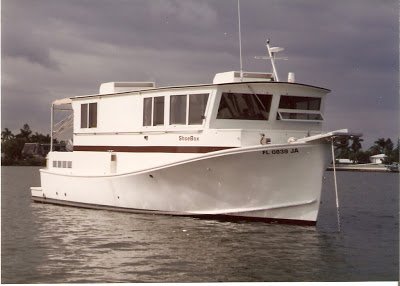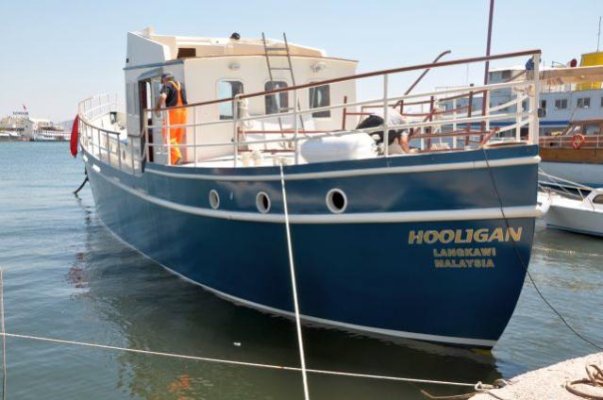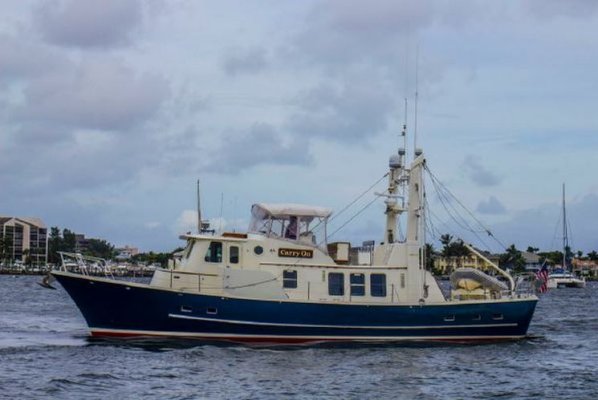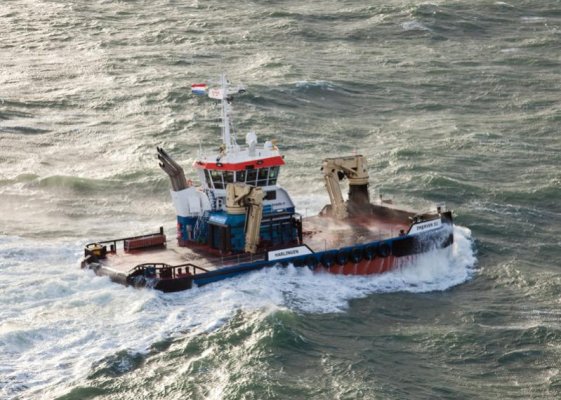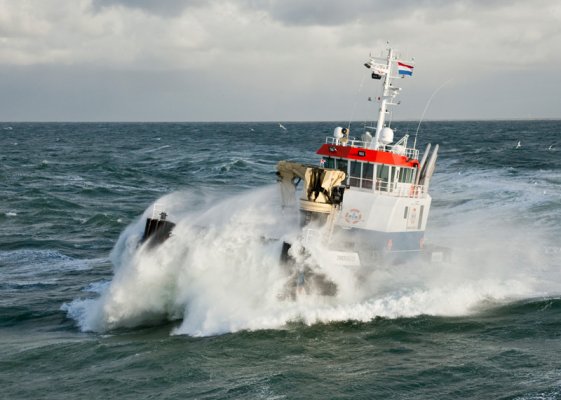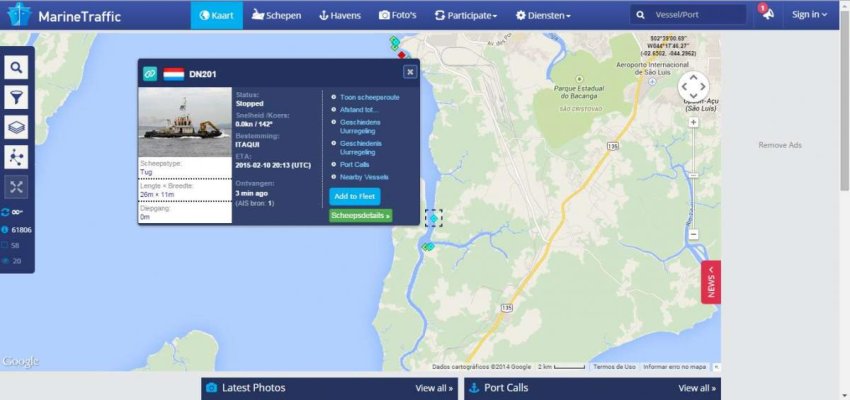I don't know of any SHM Ducks built with active stabilizers but I think some of the non SHM Ducks have had them installed. Active stabilizers costs lots of money, are one more complicated device to fail, are reported to be noisy, and they are needed on boats built with high windage boats that need superstructure to increase living volume. I just don't think they should be on boats sailing across oceans. I have not heard of any SHM Duck owner needing/wanting active stabilization. I think Bill Kimley(SHM) would have a seizure if someone wanted to install active stabilization in a SHM Duck.

Most of the SHM Ducks do have paravane stabilizers but Bill will argue with you that they are not needed.


I want paravanes.

We were on a 462 last spring and unfortunately the weather was Chamber of Commerce perfect until we got close to the marina when we were hit with high winds blowing up the sound on our starboard beam. We might have had steep 3 foot waves on the beam but the Duck did not notice. We saw a small planning boat that we thought for sure was going to get swamped because of the waves. That boat rolled a good 45 degrees port and starboard a few times and looked like she was going over. I only mention the smaller boat to describe the wind and wave conditions. The Duck was not bothered at all by the beam wind and waves and no paravanes deployed. We had hoped for really bad weather so we could see how the Duck behaved, instead we just had to enjoy the glorious weather.

The Dashew FPBs dont have get home engines and the "smaller" FPB 64 only has a single engine. Get home and twin engines are problematic as the Dashew's point out.
Sails actually make sense since they are fairly reliable, sorta cheap, extend range, and provide stability. Sails can be used all of the time while a get home engine gets used when? The get home engine just sits there and hopefully gets run to make sure it works if needed. A Duck that did have engine problems, due to owner installed out of spec fuel filters, was able to sail back to port.
I really don't get why people want plastic hulls for full displacement boats. I read all of the problems with fiberglass and scratch my head in wonder. At least with metal, if the boat is built right, you get a far better hull. I don't have to worry about blisters, fatigue, keels falling off, or boat structure failure. The Ducks have multiple water tight compartments and are built like tanks. They have sat on reefs for weeks, ran into ice bergs, and hit rocks at 10+ knots with no damage to the hull. One of the Ducks was hit by a ship that got loose from a nearby ship yard and the damage was limited to the Ducks paint job. SHM fixed the paint job and you can't find where the hit happened. These kind of incidents to a plastic boat would have been very expensive to fix, if the boat was not out right totaled/sunk. There is an old aluminium sail boat, whose owner is active on the Cruising forum, that is mentioned in a very old issue of Metal Boat Society. The MBS article is about the boat hitting a log raft in the PNW while sailing at night. No damage to the boat. Would a plastic boat survive that sort of incident?
My two cents is that the Ideal Passamaker is a not very beamy, single engine, with a limited sail plan, a pilot house with galley in the hull, limited windage topside, stand up engine room, paravanes, no need for active stabilization, stern master stateroom, and a metal hull. Unfortunately, I only know of one boat brand/desigh in production that meets these requirements.
I don't like active stabilization which I think is obvious from this post,

but in spite of that angst, I do like the Dashew's FPB. If money were no object, the FPB would be very tempting but I suspect I would still want a Duck. I think. Maybe.

Later,
Dan

